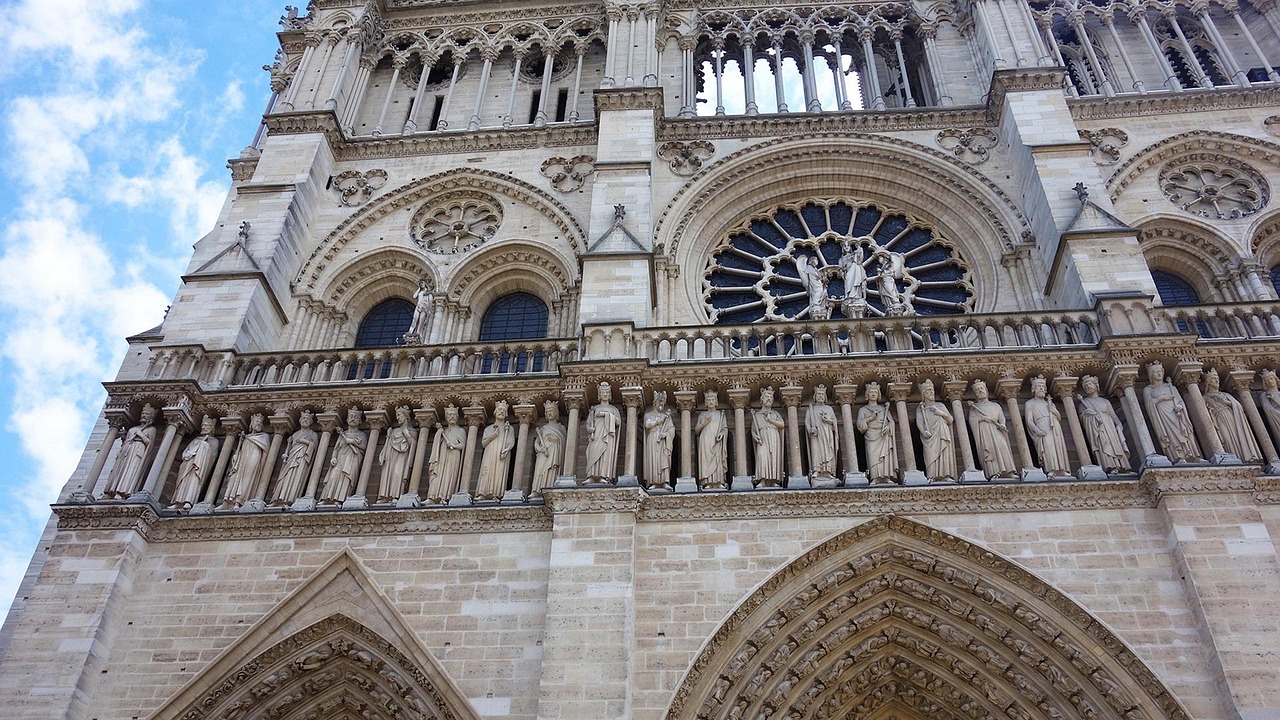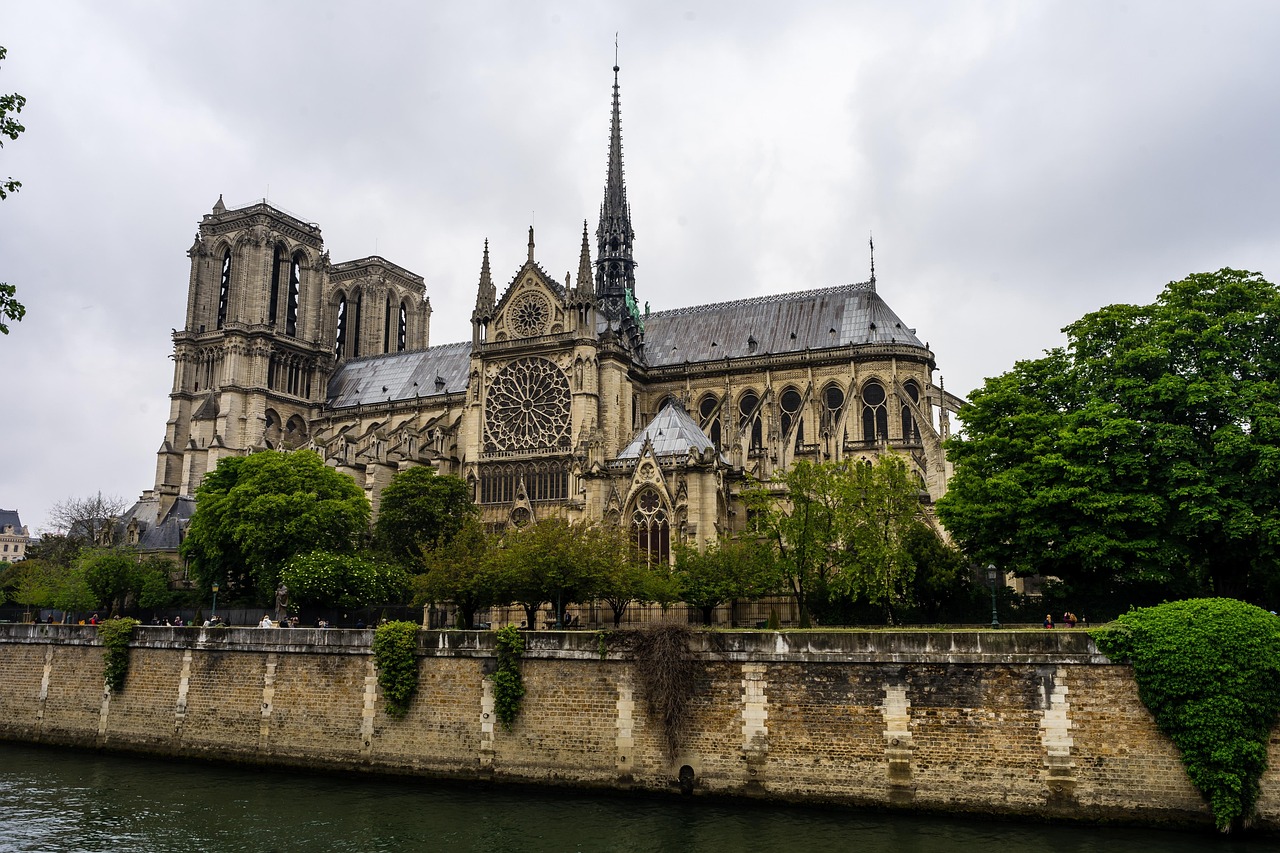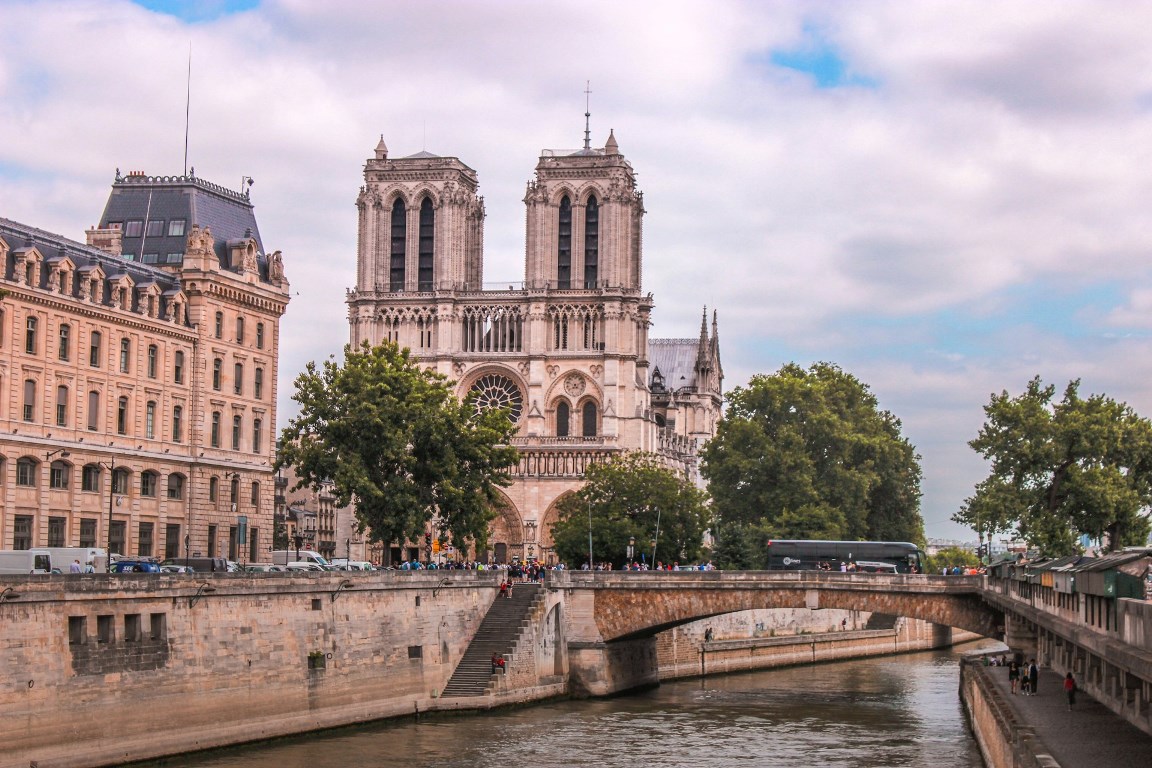Updated on 3 June 2025
The silhouette of Notre-Dame de Paris rising above the Seine is one of the most iconic images in the world. Towering spires, monstrous gargoyles, and centuries of history make it not only a masterpiece of Gothic architecture but a symbol of French endurance, faith, and cultural identity.
Nestled on the Île de la Cité, the very heart of Paris, Notre-Dame has witnessed the rise and fall of kings, revolutions, wars, and rebirths. From coronations and beatifications to Victor Hugo’s legendary novel and the devastating fire of 2019, the cathedral continues to capture the soul of the city.
A Cathedral Rises on Sacred Ground

The name Notre-Dame de Paris translates to “Our Lady of Paris,” referring to the Virgin Mary. The cathedral stands on the site of a former Gallo-Roman temple dedicated to Jupiter, making it not only a spiritual site but a symbol of Paris’s layered history.
Construction of Notre-Dame began in 1163 under Bishop Maurice de Sully and continued for over 180 years. It was a bold architectural project of its time, introducing innovations like flying buttresses and expansive stained-glass windows. By the mid-13th century, it was one of the most impressive structures in Europe – a 130-meter nave, twin towers, a vast rose window, and hundreds of expressive sculptures that communicated religious stories to all who entered.
Over the centuries, Notre-Dame was embellished, damaged, looted, and nearly demolished during the French Revolution. The 19th century saw its rescue and revival, largely thanks to the outcry following
Victor Hugo and a Literary Resurrection

In the 19th century, Notre-Dame had fallen into neglect – vandalized during the Revolution and at risk of demolition. Then came Victor Hugo, one of France’s most celebrated writers. Deeply concerned by the apathy toward Gothic heritage, he wrote The Hunchback of Notre-Dame (1831) as both a dramatic tale and an architectural plea.
The novel tells the tragic story of Quasimodo, the disfigured bell-ringer of Notre-Dame, and Esmeralda, a Romani dancer wrongfully accused of witchcraft. But its true hero is the cathedral itself – battered, beautiful, and sacred. Hugo’s romantic vision sparked public outcry and led to a large-scale restoration overseen by architect Eugène Viollet-le-Duc.
Fire and Restoration

After years of anticipation, Notre-Dame de Paris officially reopened in December 2024 following its extensive restoration. The fire in April 2019 destroyed the wooden roof and iconic spire, but left much of the stone structure intact. During the rebuild, artisans used traditional methods, sourcing materials and using craftsmanship faithful to the original.
The newly restored cathedral welcomed back worshippers and tourists alike with a ceremonial reopening, marking a new chapter in its nearly 900-year history. Despite long queues due to high visitor interest, the lines move relatively quickly thanks to improved flow management.
Architectural Highlights

- The Rose Windows: Three breathtaking stained-glass masterpieces, dating back to the 13th century, survived the fire and have been lovingly restored.
- The Façade: The front portal features scenes from the Last Judgment and dozens of biblical kings. Each sculpture has a unique expression.
- Gargoyles and Chimeras: Meant to drain rainwater and ward off evil spirits, these fantastical creatures became the guardians of Notre-Dame.
- The Organ: One of the largest in France, with over 8,000 pipes. It survived the fire and is being finely tuned for public performances again.
Point Zéro – The Heart of France

Embedded in the square just outside the cathedral is Point Zéro des Routes de France, a bronze marker designating the exact center of Paris. All road distances in France are measured from this point. Some visitors treat it like a good luck charm: step on it and you’re destined to return to Paris one day.
Visiting Notre-Dame de Paris

Location:
6 Parvis Notre-Dame – Pl. Jean-Paul II, 75004 Paris
notredamedeparis.fr
Opening Hours:
- Monday to Friday: 7:50 AM – 7:00 PM (Thursday until 10:00 PM)
- Saturday and Sunday: 8:15 AM – 7:30 PM
- Last entry: 30 minutes before closing
For the most up-to-date information, visit the official website.
Tickets & Entry:
- Cathedral entry: Free (donations encouraged)
- Guided tours: Available in multiple languages
- Although entry is free and queues tend to move fairly quickly, you can book a free time slot online in advance. This optional step helps reduce waiting times at the entrance and improves the overall flow of visitors.
What to Expect:

Security checks at entry. Dress respectfully – this is an active place of worship. Photography is allowed (no flash). The interior is cool even in summer, so bring a light jacket.
Nearby Attractions:
- Sainte-Chapelle – dazzling stained glass just a few steps away
- Conciergerie – medieval palace turned revolutionary prison
- Shakespeare & Company – legendary English-language bookstore
- Pont de l’Archevêché (Archbishop’s Bridge)– scenic river views, narrowest road bridge in Paris
- Crypte archéologique de l’île de la Cité – explore ancient Paris right under your feet
The Paris For You app (App Store, Google Play) is your perfect companion for visiting Notre-Dame de Paris:
- Get historical context in 26 languages
- Use offline maps to navigate from the metro or nearby sites
- Save your favorite spots and capture photos in one place
Whether you’re walking through the newly restored nave or standing beneath the towers imagining Quasimodo’s bell, Notre-Dame offers a deeply moving Paris experience – and one that’s ready to welcome the world again.
Also read:
Top 3 Things to Do in Paris
How to Get Around in Paris

